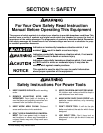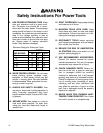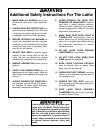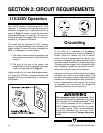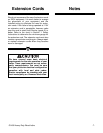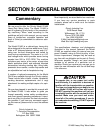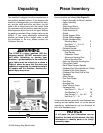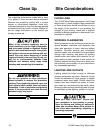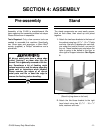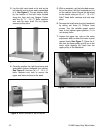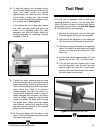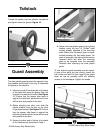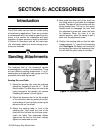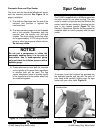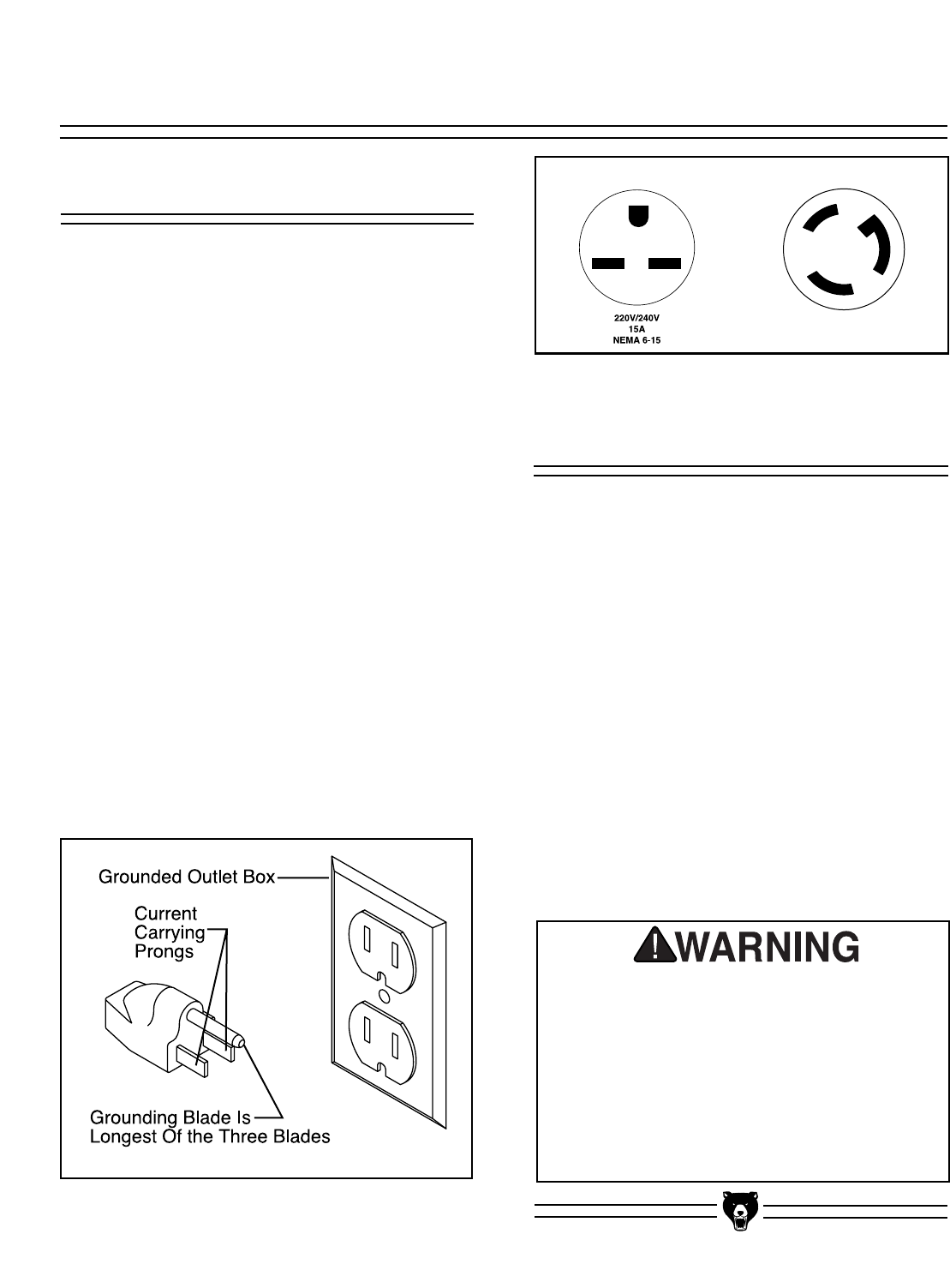
-6-
G1495 Heavy-Duty Wood Lathe
SECTION 2: CIRCUIT REQUIREMENTS
110/220V Operation
Your G1495 machine comes pre-wired for 110V
operation. It includes a three-prong plug which
should be plugged into a grounded circuit as
shown in Figure 1. Under normal use, the motor
draws approximately 12 amps @ 110V. We rec-
ommend the lathe be plugged into a circuit pro-
tected by a 15 amp circuit breaker.
This motor can be operated at 220V, however
there is no power advantage from operating at a
higher voltage. To revise the lathe to operate on
220V it is necessary to do two things:
1. The motor must be rewired according to the
wiring diagram provided at the back of this
manual.
2. The plug at the end of the power cord
needs to be cut off and replaced with a type
similar to those pictured in Figure 2.
Under normal use, the motor draws approximate-
ly 6 amps @ 220V. We recommend the lathe be
plugged into a circuit protected by a 15 amp cir-
cuit breaker.
220V/240V
15A
NEMA L6-15
Standard
Locking
Figure 2. Two typical 220V outlet configurations.
Grounding
This equipment must be grounded. Verify
that any existing electrical outlet and circuit you
intend to plug into is actually grounded. If it is
not, it will be necessary to run a separate 12
A.W.G. copper grounding wire from the outlet
to a known ground. Under no circumstances
should the grounding pin from any three-
pronged plug be removed. Serious injury may
occur.
In the event of a malfunction or breakdown,
grounding provides a path of least resistance for
electric current to reduce the risk of electric
shock. This tool is equipped with an electric cord
having an equipment-grounding conductor which
must be properly connected to a grounding plug.
The plug must be plugged into a matching outlet
that is properly installed and grounded in accor-
dance with all local codes and ordinances.
Improper connections of the electrical-grounding
conductor can result in risk of electric shock. The
conductor with green or green and yellow striped
insulation is the electrical-grounding conductor. If
repair or replacement of the electric cord or plug
is necessary, do not connect the equipment
grounding conductor to a live terminal.
Figure 1. Typical 110V plug and outlet.





